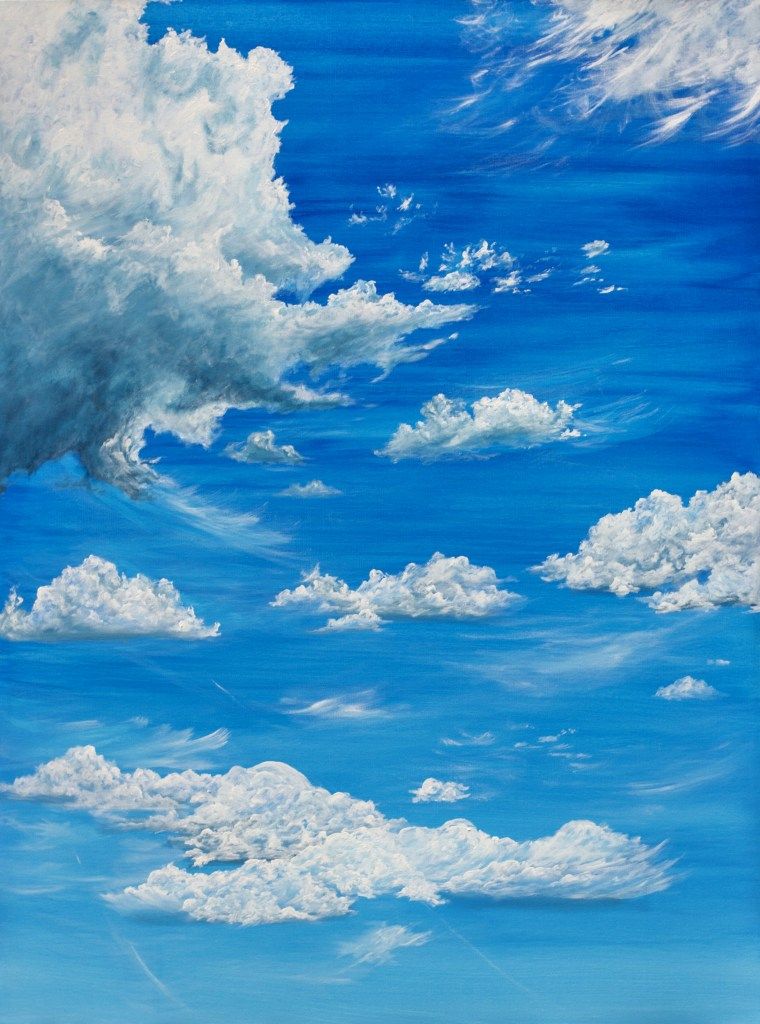When one gazes upon the vast expanse of the sky, replete with clouds that morph into fantastical shapes, it is hard not to be inspired by the ethereal beauty above us. This fascination with clouds has permeated the realms of art throughout history, leading to the creation of some of the most iconic peace-bringing paintings that evoke deep feelings and stimulate the imagination. This article delves into the world of sky scapes in art, focusing particularly on the representation of clouds and the myriad emotions and interpretations they evoke.
The portrayal of sky and clouds in artwork can be traced back to ancient civilizations. Early artists sought to encapsulate the divine and the celestial, often representing gods and mythological scenes against a backdrop of dramatic skies. In these instances, clouds were not merely decorative; they served a fundamental purpose in conveying the otherworldly or the supernatural. For instance, consider how clouds were depicted in early religious artworks—symbolizing the presence of the divine, enhancing the narrative through their dynamic forms.
As the epochs progressed, the fascination with skies evolved. The Renaissance period ushered in a renewed focus on realism and human experience, and with it, a dramatic interpretation of nature. Artists like Raphael and Titian incorporated clouds into their masterpieces, enriching the visual storytelling with layers of meaning. Their paintings often juxtaposed the serene beauty of the heavens against the more tumultuous affairs of humanity, a reflection on the dichotomy between the celestial and the terrestrial.
Fast forward to the Romantic era, and the skies became a subject of intense emotional exploration. Artists such as J.M.W. Turner and Caspar David Friedrich reveled in the dramatic interplay of light and shadow. Turner’s iconic masterpieces, for instance, are renowned for their turbulent clouds and evolving color palettes, expertly capturing fleeting moments of time. The impressionist techniques of applying thick swathes of paint make the clouds come alive, as if they were swirling with the winds of emotion. These clouds are not merely background elements; they resonate with the stormy turmoil of the spirit, leaving viewers in a state of introspection.
The Impressionist movement heralded a revolution in the depiction of clouds and light—artists like Claude Monet took this to an entirely new level. His work, “Impression, Sunrise,” epitomizes the shift towards the emotive power of color and light over precise form. The misty blues and oranges in his sunrises evoke feeling rather than accuracy, challenging viewers to engage with the painting on an emotional level. Similarly, Monet’s series of cloud-filled skies demonstrate an ephemeral quality, capturing those fleeting moments when the sun breaks through the clouds, bathing everything in a gentle glow.
Beyond Impressionism, the advent of Abstract Expressionism led to an even fuller exploration of the celestial. Artists like Mark Rothko pushed boundaries, using color and form to express the ineffable. His atmospheric canvases approach clouds not as literal representations but as emotional landscapes, invoking a sense of awe and contemplation. The way these painters utilize color theories and compositional balance draws the viewer into an introspective dialogue, reinforcing the idea that clouds can represent both personal and collective experiences.
In contemporary art, the fascination with clouds and sky scapes continues unabated. Artists today often blend traditional techniques with modern media, leveraging photography, digital art, and mixed media to convey their interpretations of the heavens. These modern-day sky portraits can vary dramatically, from the serene and reflective to the chaotic and disruptive. Some artists use clouds as a metaphor for social change or emotional upheaval, manifesting ideas about environmental concerns and the human condition.
Cloudscapes in contemporary art reflect a broader, more inclusive perspective. For instance, artists like Kim Keever create immersive installations that invite viewers to step into ethereal worlds projected against painted backdrops, simultaneously challenging and enthralling the expectations of visual arts. Such innovations highlight how the representation of clouds can be a vessel for commentary on current affairs, sustainable living, and the ever-evolving relationship between humanity and the natural world.
Moreover, the therapeutic dimension of cloud gazing is not lost in artistic interpretations. Many paintings that incorporate clouds invite viewers on a meditative journey—offering a sense of peace, calm, and escape from the rigors of everyday life. To immerse oneself in a cloud-filled sky is to engage in an act of mindfulness, encouraging introspection and poignancy. It is no surprise that such artwork finds a cherished place in homes, as they often evoke tranquility and reflection within their viewers.
As we traverse the rich history of cloud representation in art, the enigmatic and transformative power of clouds becomes apparent. From ancient depictions that signified the divine to contemporary reinterpretations that challenge societal norms, clouds in art serve as more than mere visual elements. They provoke thought, stir emotions, and illuminate the complexities of the human experience. The exploration of cloud-filled skies in paintings continues to inspire artists, collectors, and observers alike, offering a boundless canvas upon which the essence of humanity can be expressed. So, the next time you find yourself gazing up at the clouds, think of the myriad interpretations they hold and the artistic narratives inspired by their ever-changing beauty—revealing a unique connection to the world above us.
